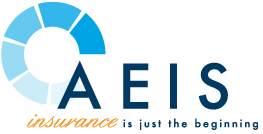Employee Benefits Compliance: Tips for Avoiding Fees & Fines

At AEIS, we understand that remaining compliant with all of your health insurance and benefits-related obligations can often feel like an uphill battle. That's why we offer risk assessment services to help remove as much guesswork from the equation as possible. If you're a small business owner, HR professional or other individual who is responsible for maintaining compliance with all ever-changing state and federal laws regarding employee benefits, don't worry - we can help.
We've also compiled a wide array of tips that you can use to avoid fees and fines pertaining to the Affordable Care Act, ERISA, and more that you should be aware of moving forward.
ACA Compliance
Also commonly referred to as the Affordable Care Act, the ACA was designed to help make sure that affordable health insurance is available to as many people in the United States as possible. As a result, it directly impacts organizations offering group health coverage that have 50 (or more) full-time equivalent employees.
Because of that, to avoid potential penalties and other fines as an Applicable Large Employer (ALE), you must meet the following requirements:
- You must offer coverage to 95% of your full-time employees and their dependents that meets the standards of minimum essential coverage. Plans that don't apply are ones that only offer vision or dental, workers' compensation, or coverage for only a specific disease or condition. Likewise, plans that only offer discounts on services and not actual health coverage do not apply.
- You must offer affordable coverage. To be deemed affordable, any employee's required contribution for "self-only coverage" (meaning not additional costs for their dependents) must be no less than 9.12%-9.61% of their annual household income. To be deemed a plan that provides "minimum value," it needs to pay for at least 60% of all covered benefits.
- You need to provide adequate reporting on the coverage that you offer. To do this, you will need to file Forms 1094-C and 1095-C with the IRS every year. A copy of that 1095-C must also be provided to all relevant
ERISA Compliance
ERISA, otherwise known as the Employee Retirement Income Security Act of 1974, was put into place to offer protection for those in health and welfare and retirement plans. It requires administrators to offer participants detailed data about the plan itself. In addition to applying directly to group health insurance, it also impacts voluntary programs like life and disability insurance policies.
To avoid fees and other penalties, you must meet the following requirements:
- You need to provide a Summary Plan Description (or SPD for short) to all participants. This makes every aspect of the plan clear, from eligibility requirements to benefits, claims, how to appeal a denied claim, enrollment rights, and their rights under the act itself. This must be provided within 90 days of someone getting coverage or within 30 days of them asking for it in writing. It also must be provided every five years if any changes are made, or every 10 years if it remains the same.
- You need to create a plan document that your plan is then maintained by. There are no formatting requirements, but it needs to clearly outline all rights of plan participants as well as go into detail about how the plan is operated and administered. This doesn't have to be provided to employees necessarily, but they will need to receive a copy within 30 days if they request it in writing.
- If you have over 100 participants for any given health or welfare plan the employer offers (including dental, disability, vision, life insurance, etc.) you must file Form 5500 with the Department of Labor. You will need to do this every year. You must do this by the final day of the 7th month after the stated plan year ends.
Note that if you fail (or outright refuse) to file Form 5500 unless you are otherwise exempt, you can be fined up to $2,586 per day. That is up from $2,400 per day in 2022. Willful ERISA violations can also potentially carry additional criminal penalties of imprisonment and fines.
COBRA Compliance
The Consolidated Omnibus Budget Reconciliation Act, otherwise known as COBRA, applies to companies that have 20 or more employees that sponsor group health plans. To remain in compliance and avoid fees or penalties, you must do the following:
- Distribute proper notices. As soon as an employee experiences what is deemed as a "qualifying event," you must provide them certain notices outlining their rights. That includes an Election Notice, which must go out 14 days after learning of the event. There is also a General Notice, which must be given to the employee or their spouse no more than 90 days after coverage begins.
- You must charge the proper premium. Even though you're not required to contribute to COBRA premiums, if your employees are responsible for the entire thing, it cannot cost more than the full cost of coverage plus a 2% administrative fee.
- You must make coverage available for the longest allowable period. This means you need to offer continuation coverage for 18 or 36 months, depending on the event that triggered the coverage in the first place. If you fire an employee, for example, they are eligible for 18 months of coverage - except in situations where they became eligible for Medicare fewer than 18 months before you terminated them. To continue with this example, their spouse and any dependents would be eligible for up to 36 months.
HIPAA Compliance
HIPAA was put into place in 1996 as a way to protect the sensitive health information of employees. It applies to all employer-sponsored health plans, except self-funded health plans and those with fewer than 50 people participating. If you hold onto health information like the payments people are making for healthcare services, or identifying records that you've received from a health insurance company, you must follow the rules. Those include:
- You need to give notice of your privacy practices. This Notice of Privacy Practices will give people a clear explanation of what their rights are with regard to their health data, as well as the steps you're taking to keep it private.
- You must establish safeguards to protect employee health information.
- You need to provide notice of any breach of unsecured personal health information no later than 60 days after you have discovered that it occurred.
Benefits Notices
In addition to everything outlined above, there are also notices that you will need to send out on a yearly basis for group health plans. These provide essential information about someone's coverage, the rights of their beneficiaries, yours and their responsibilities, and more. These include ones like:
- Affordable Care Act Notices.
- Genetic Information Nondiscrimination Act (GINA) Disclosures.
- Children's Health Insurance Program Reauthorization Act (CHIPRA) Notices.
- Michelle's Law Notices.
- Mental Health Parity and Addiction Equity Act Disclosures.
- Women's Health and Cancer Rights Act Notices.
- Newborns' and Mothers' Health Protect Act Notices.
- Medicare Part D Notice of Creditable Coverage.
- Grandfathered Plan Notices (if offering Grandfathered health plans).
- Summary of Benefits and Coverage documents for health and dental plans.
In January 2023, the United States Department of Labor announced a series of updates to their penalty structure. They are as follows:
- If you have a multiple employer welfare arrangement (MEWA) and you don't file Form M-1 with the Department of Labor, you can be fined up to $1,881 per day. That is up from $1,746 per day in 2022.
- If you fail to offer plan-related information requested by the Department of Labor, you can be fined up to $184 per day not to exceed $1,846 per request. That is up from $171 per day not to exceed $1,713 per request in 2022.
- If you don't provide the required annual notice regarding the Children's Health Insurance Program (CHIP) coverage opportunities, you could get fined up to $137.00 per day per employee. That is up from $127.00 per day per employee from 2022.
- If you don't disclose information to the state regarding group health plan coverage for one of your employees who is covered under a Medicaid or CHIP plan, you can be fined up to $137.00 per day per employee. That is up from $127.00 per day per employee in 2022.
- If you don't comply with the requirements of the Genetic Information Nondiscrimination Act (GINA) for health plans, you could get fined up to $137.00 per day per plan participant or beneficiary during the period in which you were noncompliant. This is to be a minimum of $3,439.00 per participant or their beneficiaries if the issue is not corrected prior to receiving notice from the Department of Labor. There is also a minimum of $20,641.00 per participant or beneficiary for any issues that are not corrected prior to receiving a notification from the Department of Labor that are not de minimis. There is a maximum of $688,012.00 penalty for all unintentional failures.
- If you don't provide the required Summary of Benefits and Coverage, you could be fined $1,362.00 per employee. That is up from $1,264.00 per employee in 2022.
If you'd like to find out more information about ensuring benefits compliance and avoiding the types of fees and fines that could potentially cost you significantly, or if you just have any additional questions about employee benefits compliance that you'd like to discuss in more detail, please don't hesitate to contact the team at AEIS today.



